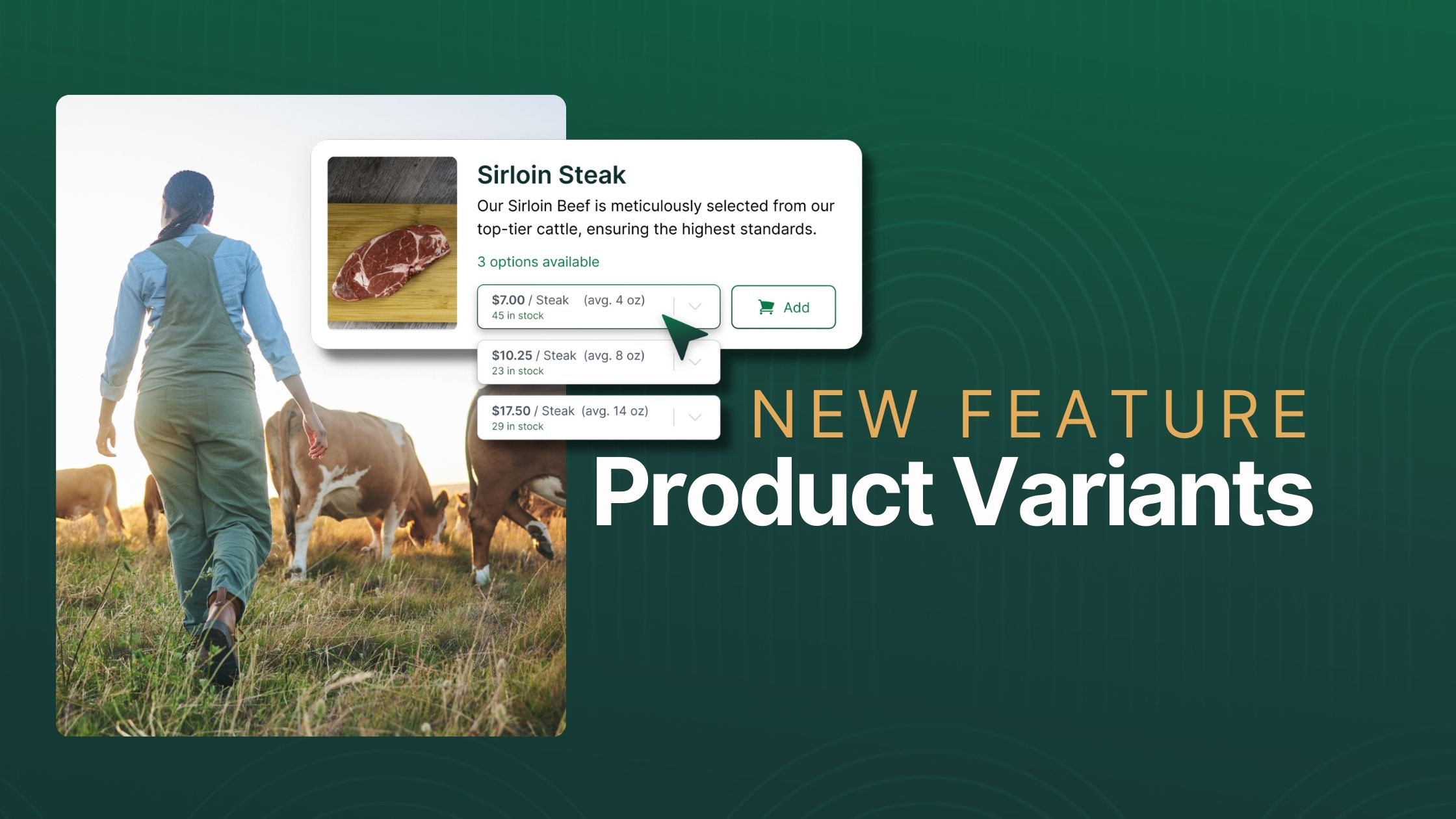Finding the best way for you to sell your meat isn't easy. There are lots of different options, each with their own pros & cons.
Today, we want to help you answer one question: Should you run a meat CSA, or not?
First, let’s go through some definitions – what is a meat CSA? What’s the difference between a meat subscription and a CSA? What’s a buy-down CSA?
Honestly – they all kind of mean the same thing, and it really depends on what you produce, who your customers are, and what you want your day-to-day to look like.
The first decision to make is: Do I want to offer my customers flexibility or not? By flexibility, we mean:
- Can your customers choose what’s in their box?
- Do they have a certain amount they have to spend with each order?
- Can they skip or cancel their box delivery?
If you decide flexibility is the name of the game – consider a buy-down CSA model. This is where customers pay upfront at the beginning of the subscription period and each week, they can customize their box/order based on what they want that week. Over a defined period, their share credit gets deducted to $0, at which point they can re-buy and start again!
Some pros of the buy-down CSA model:
- Full flexibility for your customers. Not only do customers get to pick what they want, but they can also easily skip a week and order additional meat in their next order.
- Payment upfront. You get paid right at the beginning of the period, which can improve cashflow and can result in increased order values as customers add more a la carte options throughout the course of the subscription period.
How would you put this into practice? You need a feature called Store Credit! Here’s how it would work:
- Create a product in your Local Line storefront for your different share options. Full share, half share, family box, you name it.
- Once a customer purchases their share, you allocate the share amount as store credit in their account.
- Create a CSA price list. This price list is where CSA members can create their weekly/biweekly/monthly orders and pay with store credit.
- Create an automated price list email that automatically reminds customers to put in their orders according to your fulfillment cadence.
Alternatively, sometimes customers might be hesitant to pay a lump sum at the beginning of the season. But – you can still offer them flexibility. This is where a subscription model might be better fitting.
Some pros of the subscription model:
- Customers get their meat box on a regular cadence and are charged after the order has been fulfilled, instead of paying upfront for a certain number of subscriptions like in the buy-down model.
- Have the ability to add a la carte purchases from your online store in addition to their subscription.
- Flexibility to skip, add, or cancel an order.
- Recurring revenue and increased cashflow predictability for you. Although you're not collecting a bulk payment up front, you'll be able to lock in a recurring payment that can provide valuable cashflow predictability.
How would you put this into practice? You'll need our subscriptions feature. Here’s how it would work:
- Create your subscription products in your storefront and select your subscription settings including: fulfillment options, discounts, ability to skip, and more.
- Sell your subscriptions. You can either create a subscription plan in your back office or as customers order your products – a subscription plan will be created for them. They can manage their subscription settings in their Local Line account.
- Fulfill the subscriptions. Leading up to your fulfillment date, a draft order will be created in your Local Line back office. Your customers will have the ability alter their order and add any one-off purchases. You can also alter the final weights of your meat if you sell by weight.
These are just two ways you could offer a meat CSA or subscription model to your customers. When we asked farms how they ran their meat subscriptions, here were some ideas they provided:
- "Use a nose-to-tail model. Customers get a variety of of prime and non-prime cuts. Pricing varies on the weight they order, and their payment terms. If they pay upfront for 12 months, they get a 10% discount; for 6 months, they get a 5% discount."
- "Offer a combination of both. Let customers pick how they want to pay: upfront at the beginning of the season or a monthly, automatic recurring payment that operates like a subscription."
- "Flexible start dates. One meat producer offered a buy-down CSA model where they allowed their customers to start at anytime. They also offer flexible ordering frequency - can order weekly, bi-weekly, or monthly."
The moral of the story is this: find the right model that works for you. Ultimately, it may require some experimentation!
Nina Galle
Nina Galle is the co-author of Ready Farmer One. She continues to arm farmers with the tools, knowledge, and community they need to sell online at Local Line.
.webp)



